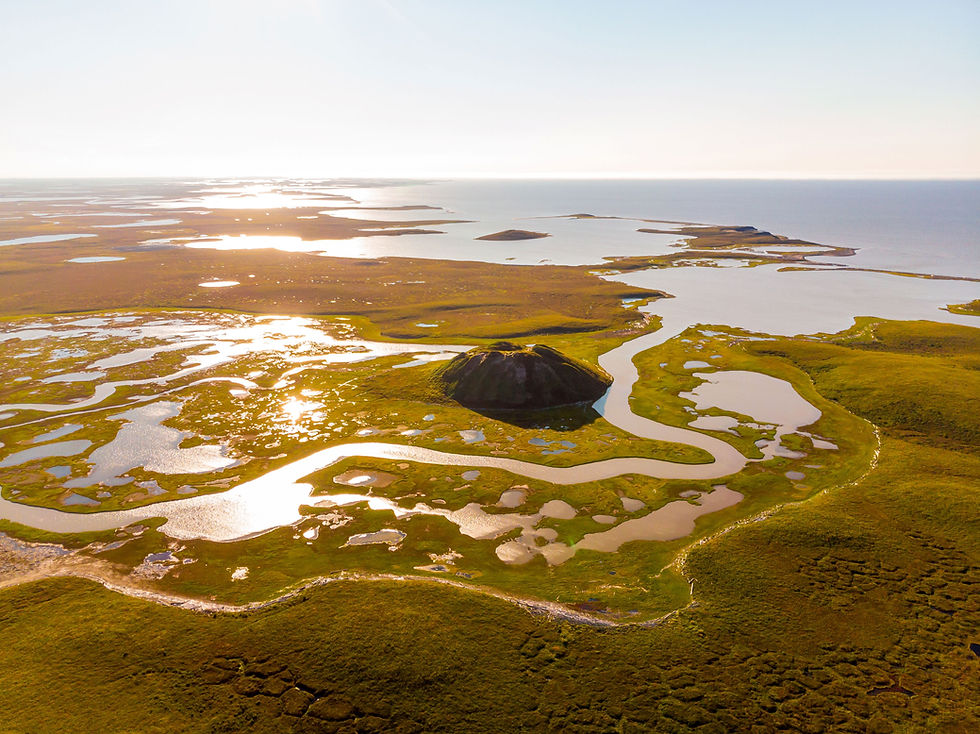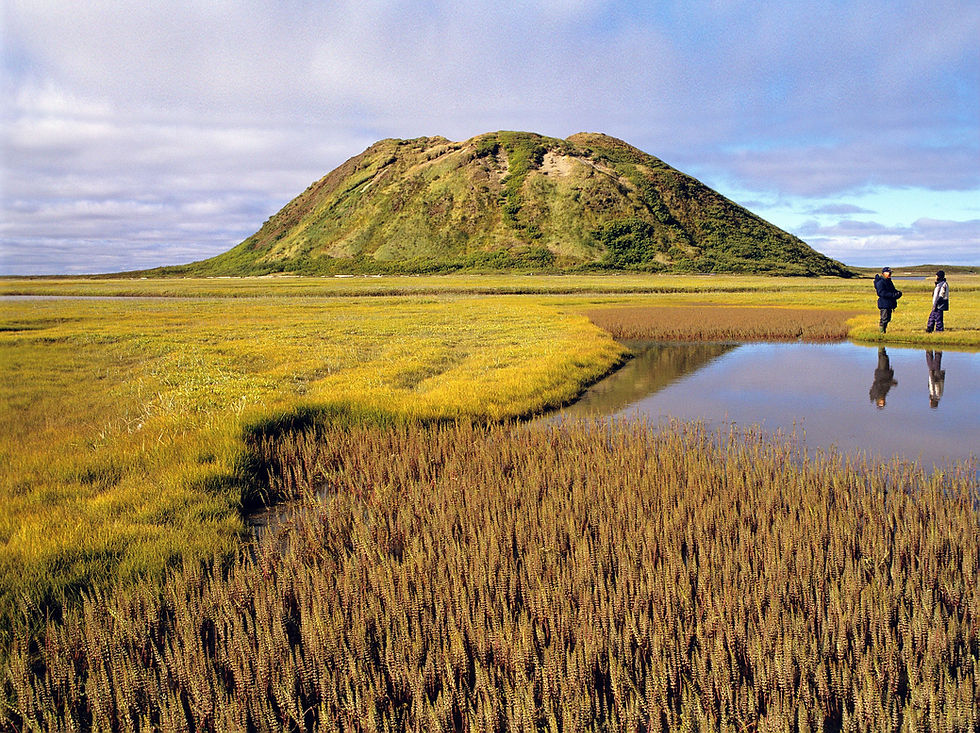Why Pingos are the NWT’s weirdest landmark
- Michaela Arnold
- Jun 2, 2023
- 2 min read

It's about the oddest landform you'll ever see - a frozen eruption, bursting in slow-motion from the tundra. For eons they have risen like sentinels. Viewpoints. Landmarks. Ecosystems. Attractions. Looming stoically over the polar sea. Here's why the pingos of the Northwest Territories will put you on top of the world.
Secret #1
“Pingo” is Inuvialuit for small hill. The word has been used by scientists since 1938, beginning with the Arctic botanist Alf Porsild. We’re thankful Porsild popularized “pingo” instead of the alternate name, hydrolaccolith. In fact, Porsild Pingo, near Tuktoyaktuk, is named in his honour.
Secret #2
Pingos are a kind of “periglacial” landform, meaning they are created through processes of freezing and thawing. Covered with tundra on the outside, they contain a core of ice. They grow in much the same way that a can of pop expands as it freezes.
Secret #3
Pingos can be as big as a football stadium – up to 70 metres tall, with a circumference exceeding half a kilometre.

Secret #4
Erupting from the pancake-flat tundra just outside the community of Tuktoyaktuk, this bulbous, ice-filled mound is the second-largest "pingo" on Earth. Called Ibyuk, it rises to the height of a 15-storey building and is 1,000 feet wide at its base.
Secret #5
What’s more, Ibyuk is getting bigger: It rises at a rate of two centimetres per year. It is estimated to be 1,300 years old.
Secret #6
The Mackenzie Delta has the highest concentration of pingos on Earth – approximately 1,350 of them. Eight, including Ibyuk, are protected by Parks Canada in the 16-square-kilometre Pingo National Landmark outside Tuktoyaktuk.
Secret #7
Other than gigantic Ibyuk, the pingos in Pingo Canadian Landmark range from five meters to 36 metres tall. They represent different stages of growth, from budding newborns to elder pingos that are shrinking and slumping.
Secret #8
For eons, the Inuvialuit of the Arctic coast have used pingos as navigational aides. They also serve as a useful lookout when searching the tundra for caribou or scanning the sea for seals and whales.

To experience pingos for yourself, plan a trip to Tuktoyaktuk. Day excursion are available by air from Inuvik – or drive there on the new Inuvik-to-Tuktoyaktuk Highway.
Further information on the Northwest Territories can be found at www.spectacularnwt.com.



Comments